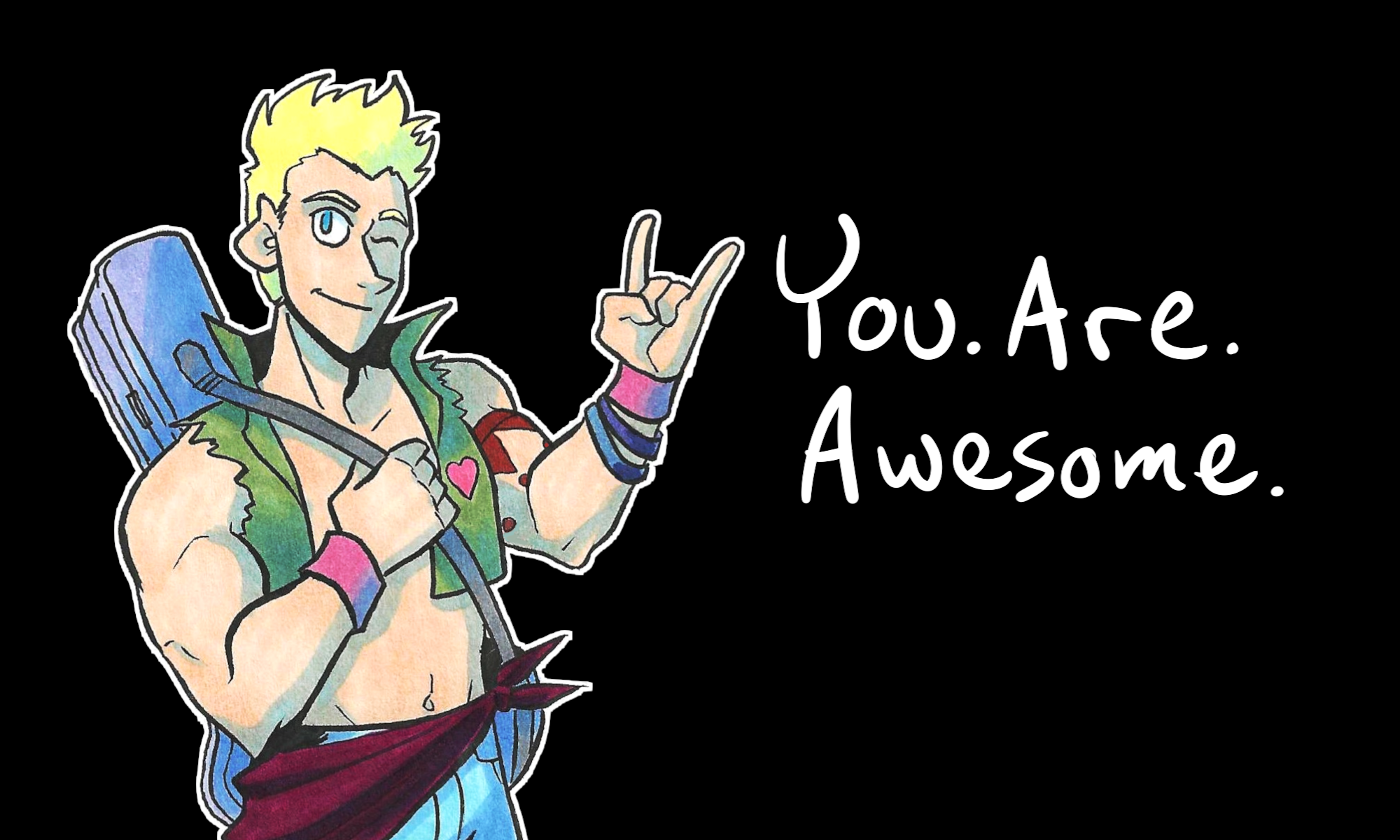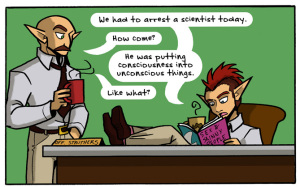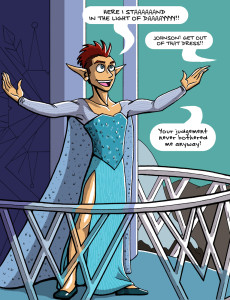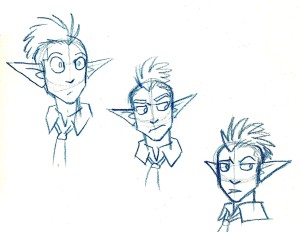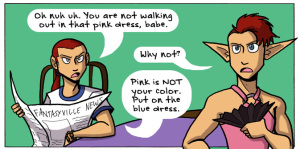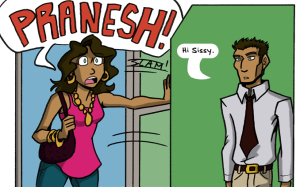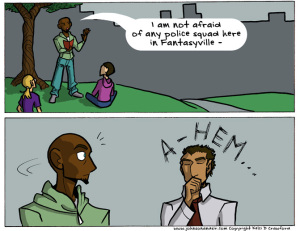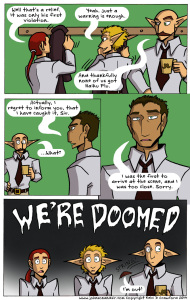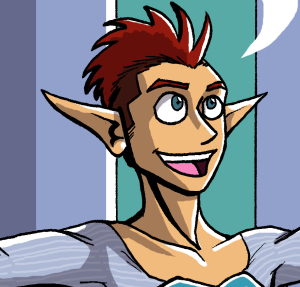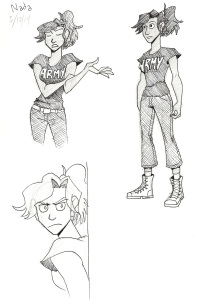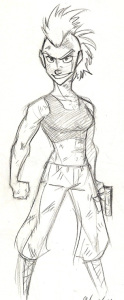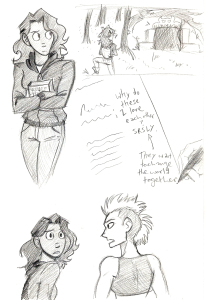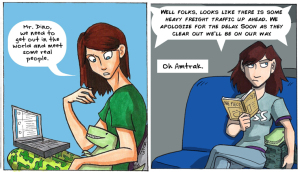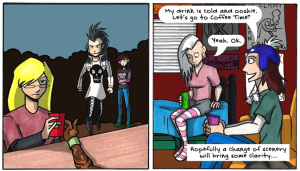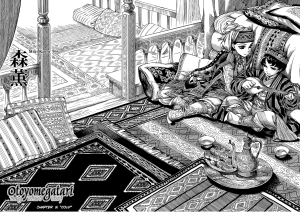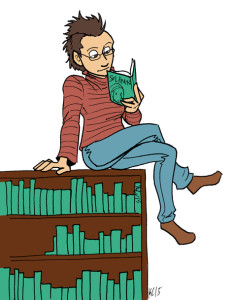
Yep.
My first ever paid job in high school was being a librarian. Technically, I was a page, so my job was to re-stack books, DVDs, CDs, and other stuff people checked out and returned.
The cool thing was I was a page at a time when libraries just caught on to the idea that graphic novels were cool. So the graphic novel section was growing and getting all kinds of cool additions. This was how I was exposed to works like Cairo by G. Willow Wilson and M.K. Perker (which I reviewed here), Paradise Kiss by Ai Yazawa, and (most importantly) Making Comics by Scott McCloud.
I, as a page, was also supposed to clean up small messes. I have found many strange things in my time as a page, from abandoned wallets to an ash tray that was ripped out of a truck. But that’s a story I’m going to get into…right now.
I was sorting in the large print section when I found this aforementioned ash tray. And I was really confused. So I took it to the sorting room and approached the other librarians, saying “I found this weird ashtray. What should I do with it?”
My manager in her corner office said “BURN IT!” But one of the other ladies said she would hold on to it until someone claimed it. After all, it was an ash tray that belonged in a car. Someone should get it, right?
Ten minutes later I’m back in the large print, moving onto Non Fiction next to it, when a greasy guy in a leather jacket approaches me, looking nervous, saying, “Uh…did you by chance see an ash tray around here? It’s for my truck.”
True Facts.
Anyway, I was a page for two years until I graduated high school and went to college.
For a semester I had a minor in Pop Culture (because Bowling Green State University, my alma mater, was one of the few schools that offered classes in Pop Culture studies).
While I was studying this oddball field, I worked at the Browne Popular Culture Library.
Yes, this was a thing.
It was a very cool thing, too. It carried all manner of comics and graphic novels, and they even had dime novels from as far back as 1910. There were movie scripts, posters, and a ton of Star Trek memorabilia (I heard the library has the largest private collection of Star Trek memorabilia carried by a library in the United States). There were also pulp magazines, though they were rarely, if ever, read… The pulp was so old they were kept in special boxes so the light would not damage them, and if they were ever handled, it was with gloves, so the oil on your fingers wouldn’t damage the pulp paper.
The library even carried copies of the original elvish dictionaries written by J.R.R. Tolkien himself.
So with all of this awesomeness within our walls, you would think we were slammed with people.
But there was a catch: The Browne Popular Culture Library is what librarians call a “closed-stack” library. That means everything was kept behind closed doors, and if you wanted to check out anything, you had to fill out a form and a librarian (like me) had to run back and fetch it.
We had our catalog online, which is how you can find books in the Pop Culture Library in the first place. But once you got the book, it wasn’t allowed to leave the floor.
So…no, there weren’t a lot of people clammoring for the books there.
My time there was short, but I enjoyed it. It was the job that got me into comics as a cultural force, rather than comics as throwaway entertainment.
Because the cool things was: I saw a ton of old AND new comics in that library. I saw the original pulp magazines and dime novels.
And yes, the popularity of mediums changes. Dime novels aren’t really a thing anymore, and digest comics like Archie, I’m sad to say, are starting to lag.
But though the popularity of storytelling modes might change, the constant thing is that there are stories, and they are there, waiting to be read.
It’s fascinating to see the arc of popular culture history, seeing what was popular and what faded in favor of the next fad, and why the next fad was so huge.
Comics are, I dare say, the new fad in storytelling, because their potential is being rediscovered. Back in the 1950s, comics in the U.S. took a giant leap backwards (that’s a VERY long story I’ll save for next time), and since then comics as a medium in the U.S. has been playing catch-up with the rest of the world.
Comics are reemerging as a fad, and I would say that’s a good thing. It’s an artistic medium that deserves to be created with, studied, and read.
How long will that fad last? I don’t know. Tell me what you think in comments.
Thank you for reading, and I’ll see you tomorrow.
